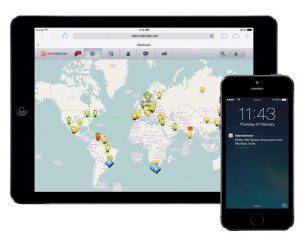 As global supply chains continue to tackle ongoing disruptions, one major headwind that most organizations are faced with is the inflationary environment we are living through. This is starting to mount cost pressures just at the time when additional investments are needed to build resilience. So, how can organizations tackle the inflationary environment by finding significant cost savings opportunities while improving resiliency?
As global supply chains continue to tackle ongoing disruptions, one major headwind that most organizations are faced with is the inflationary environment we are living through. This is starting to mount cost pressures just at the time when additional investments are needed to build resilience. So, how can organizations tackle the inflationary environment by finding significant cost savings opportunities while improving resiliency?
The key to this lies with sourcing. Before diving further, let us define what sourcing is. Sourcing is the practice of finding and selecting suppliers for a range of services (e.g., transportation, warehousing) or materials – direct, indirect, MRO (Maintenance, Repair, and Operations), goods for resale. While unit cost of the product or service is an important attribute, organizations are increasingly blending additional attributes related to sustainability, diversity, and other such factors into sourcing decisions.
Traditional sourcing practices tend to be highly manual and are fraught with latencies and inefficiencies. Digitalizing sourcing (i.e., the use of advanced digital technologies to create sourcing events, receive bids online from suppliers, comparing bids, and down-selecting suppliers to lead to the contractual process) provides opportunities to establish additional sources of supply while encouraging healthy competition between potential suppliers to put together the best offers for the context.
Let us take the example of direct materials, i.e., materials that are used as components in making a finished product, such as a hard drive or RAM in a personal computer. Or say you are sourcing tomatoes to make tomato sauce, there are a large number of factors at play. Listed below are some attributes you may be looking for in supplier responses:
- Total costs including unit cost, shipping cost, and any overhead costs
- Order delivery lead time
- Service level guarantee (and penalties for not complying)
- Shelf life considerations
- Incumbency and performance KPIs of the supplier (i.e., is the supplier currently serving the business?)
- Sustainability ratings / carbon impact
- Diversity / minority status of the supplier
These are just a small subset of a very wide range of attributes one may consider for sourcing.
Beyond this, the sourcing entity may have criteria it may employ such as:
- Awarding business to a minimum of five suppliers with at least three of them being incumbents
- Rewarding the best performing suppliers (e.g., at least 50% of the business awarded to suppliers with a five-star rating)
- No supplier can bid for more than three different items included in the bid
- Only award up to a maximum of 80% of a supplier’s capacity so that they aren’t struggling to reach 100% throughput to meet the demand. And vice versa – never allocate more than 80% of the demand to one supplier
…… and many more. These criteria become constraints on the bid.
Now, the suppliers themselves may get creative with offerings such as:
- Volume discounts / tiered pricing
- Bundled offers (if you buy X, Y, and Z from me, I can offer a 10% discount or in case of transportation, grouping of backhaul lanes at a discount along with inbound lanes)
- Early pay discounts or extended payment terms
- Alternate materials or specs that will still satisfy the need for the potential customer
Now you see how the permutations and combinations can get fairly complex. Trying to evaluate bids with such complexity is well beyond the realm of manual methods and Excel spreadsheets. They take far longer than needed and yield suboptimal results. Leading organizations are deploying cloud based technologies to launch sourcing events, invite bids, and employ sophisticated combinatorial optimization techniques to evaluate bids, and down select suppliers. Such technologies enable visibility, process enablement, and analytics while providing a user experience that is highly intuitive and comparable to consumer oriented apps to provide ease of interaction for the sourcing professionals and suppliers alike.
In our experience, by embracing digitalization of sourcing operations, organizations are able to uncover double digit percentage savings from sourcing events. A very large global company was able to realize savings to the tune of US$300 million from a single complex sourcing event with 400+ business rules, 300+ suppliers and 6,000+ items!
In a world where cost pressures are mounting and the outlook remains cloudy, organizations should consider sourcing digitalization as a competitive advantage and a significant value unlock. In a highly constrained world, the first mover with the lock on material and capacity in short supply comes out ahead. Digitalized sourcing brings additional benefits that go beyond significant cost savings by also affording an unparalleled level of transparency and speed of execution. When organizations have speed, visibility and transparency in sourcing and can achieve cost savings through digitalization, they become more resilient in the face of inflation and disruption.
Dr. Madhav Durbha is the Vice President of Supply Chain Strategy Coupa Software, where his team helps customers and prospects solve various supply chain challenges. Prior to Coupa, Dr. Durbha held positions at LLamasoft, Kinaxis, JDA Software and i2 Technologies, Inc. With more than 20 years in the supply chain industry, Dr. Durbha has broad experience in strategy & process consulting, supply chain software, program management, software application development & deployment, machine learning and data science. He received his Ph.D. in chemical engineering from the University of Florida and his bachelor’s degree in chemical engineering from the Indian Institute of Technology at Madras.



















